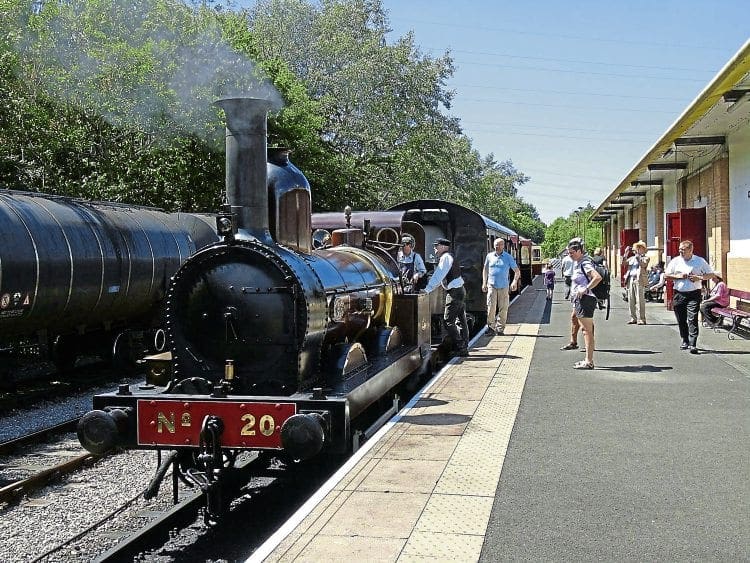Craig Amess discovers what’s on offer at the Ribble Steam Railway in Preston, and the railway preservation events that led to its opening in 2005.
Lancashire’s Preston Docks are home to the standard-gauge Ribble Steam Railway on which visitors can enjoy a three-mile trip around the docks and along the riverbank. The railway opened to the public on September 17, 2005, and has its origins in the society that was based at Steamport, Southport, before that venue closed in 1999.
During the development of Preston, and in the hope that it would become a major manufacturing town, a small dock was built on the east bank of the River Ribble, and as early as 1845 a branch line was built from the west side of the town to serve the warehouses.
In 1882 the Dock Navigation Company and railway were acquired by Preston Corporation so that it could be developed into a major port, and in 1892 the line was extended following the opening of the Albert Dock. At the height of the port’s activity, there were a mile and a half of quays and 28 miles of railway track.
The line was exclusively for freight, and never had a passenger service.
Eight locomotives were used at the dock, and the shunting locos were steam until 1968, when they were replaced by Sentinel industrial diesels.
The branch line had a very steep 1-in-29 gradient, and even the ex-London & North Western Railway G2 0-8-0 tender engines were hard-pushed with the heavier trains and often needed a banker.

In the late 1930s the Armstrong-Whitworth Company provided a prototype 250hp 0-6-0 diesel-electric shunter for trails on the dock system, and this was later bought by Preston Corporation.
The docks closed in 1979 when operations became uneconomical, and the docks area was earmarked for redevelopment, but the branch line was retained to serve the business park, with the track realigned slightly.
The preservation era
In 1971 a group that became the Southport Locomotive and Transport Museum Society met in a former Lancashire & Yorkshire Railway locomotive shed at Derby Road, Southport.
Members received permission to tidy the site, which had become badly derelict and vandalised after being closed in 1966 and stripped of all recoverable materials. As a result, the yard was full of rubbish and rubble, the building had no doors, the roof no glass and there was neither water nor electricity – and worst of all, no track was left!
For the full article and to view more images, see the January 2019 edition of Modelling – available now!
For a complete list of stockists and how to get your copy, visit: www.railwaymagazinemodelling.co.uk/distributon.


